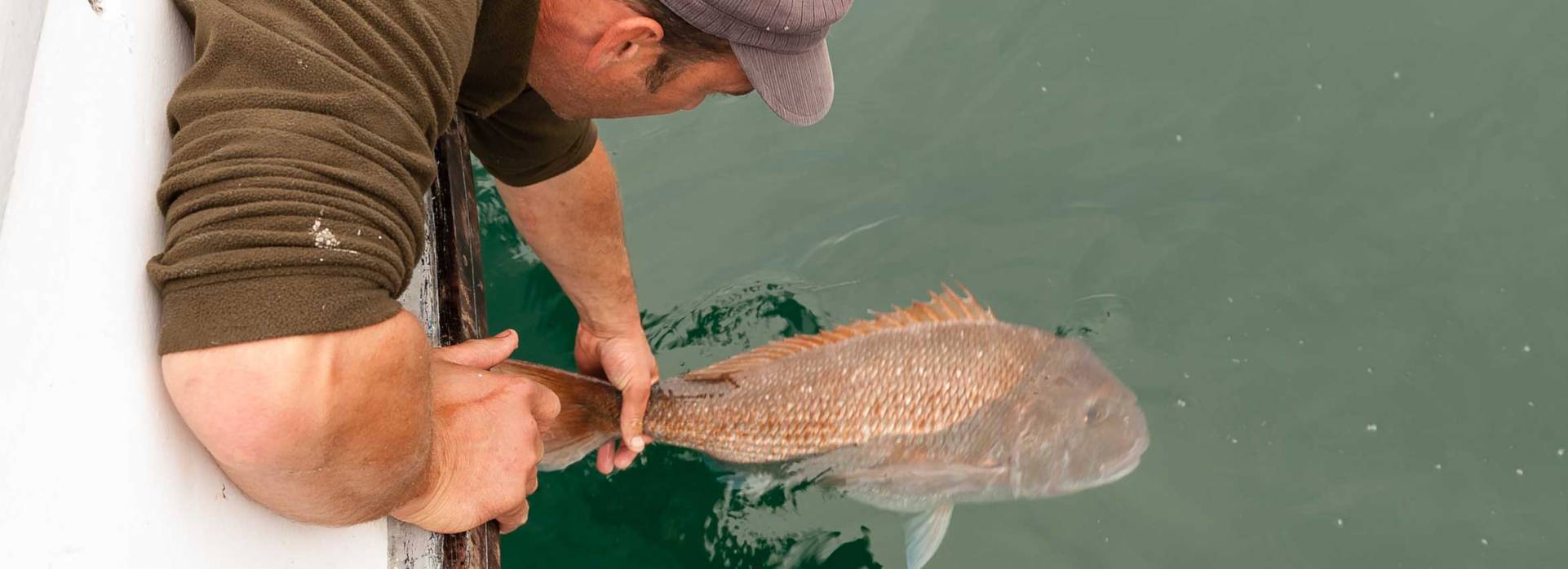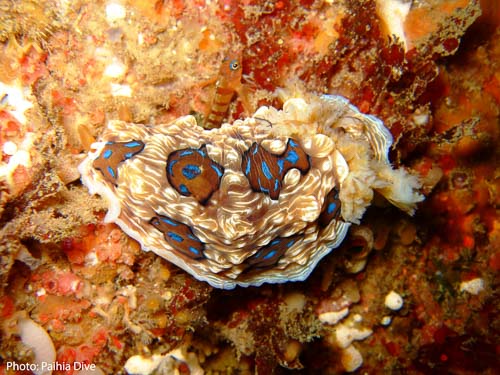 Taking big snapper and big crayfish out of an area lets kina run rampant. Ever seen a kina barren?
Taking big snapper and big crayfish out of an area lets kina run rampant. Ever seen a kina barren?
Putting the big snapper and big crayfish back is one thing we can do to keep our shallow reefs healthy.
- Big snapper and big crayfish deal to kina, keeping their population in check. Smaller snapper and crays can't do that job.
- When these big predators are removed from an area, kina numbers explode.
- Kina eat kelp.
- Left unchecked, kina munch through kelp forests, sometimes as deep as 8 m, leaving bare rock - kina barrens
- Kelp forests are the nurseries of the sea. When they are gone vital habitat for food, for cover and breeding is lost.
In a habitat survey around Waewaetorea and Okahu Islands in the Bay of Islands, it was found 65% of the sheltered reefs were kina barrens
- Download "Flagging Kelp" an essay by marine scientist John Booth 1.27mb
- Download "Wrecked Reefs" an essay by marine scientist John Booth 3.96mb
- Download "Urchin Barren Study" a report by biologist Vince Kerr 2.57mb
- Download "Waewaetorea Habitat Report" a report by biologist Vince Kerr and marine scientist Roger Grace 3.13mb
Big snapper and big crayfish are the best breeders. Their egg production increases exponentially with greater size.
That equates to the best chance for the maximum number of juveniles to bolster the snapper population – if everything else is hunky dory. (Typically in snapper, good numbers of new juveniles correspond to warm years.)
By definition a large snapper is also a “good snapper” – it is a skilled predator and both smart and fast enough to have avoided our fishing lines over the years. It follows that these good snapper are the key breeders passing on the best genes to the population.
This brings us down to the principle of natural selection, the way that species prosper and evolve in a changing world. Fishing selects for slow-growing, early maturing individual snapper. This unnatural - or artificial - selection may not be in the best interest of the species. By fishing out the bigger snapper we may be compromising evolutionary development within the population. We may be losing the good genes.
 "We had no reason to believe that Kina Barrens, widespread throughout Northern NZ were anything but a natural occurence. We now know they are an artifact of overfishing. Kina Barrens have all but disappeared at Goat Island and Tawharanui Marine Reserves... "
"We had no reason to believe that Kina Barrens, widespread throughout Northern NZ were anything but a natural occurence. We now know they are an artifact of overfishing. Kina Barrens have all but disappeared at Goat Island and Tawharanui Marine Reserves... "
Dr Roger Grace - Marine Scientist







 All of us with an interest and love of Tangaroa, let's work together and take on the challenge of marine protection for the Bay.
All of us with an interest and love of Tangaroa, let's work together and take on the challenge of marine protection for the Bay.